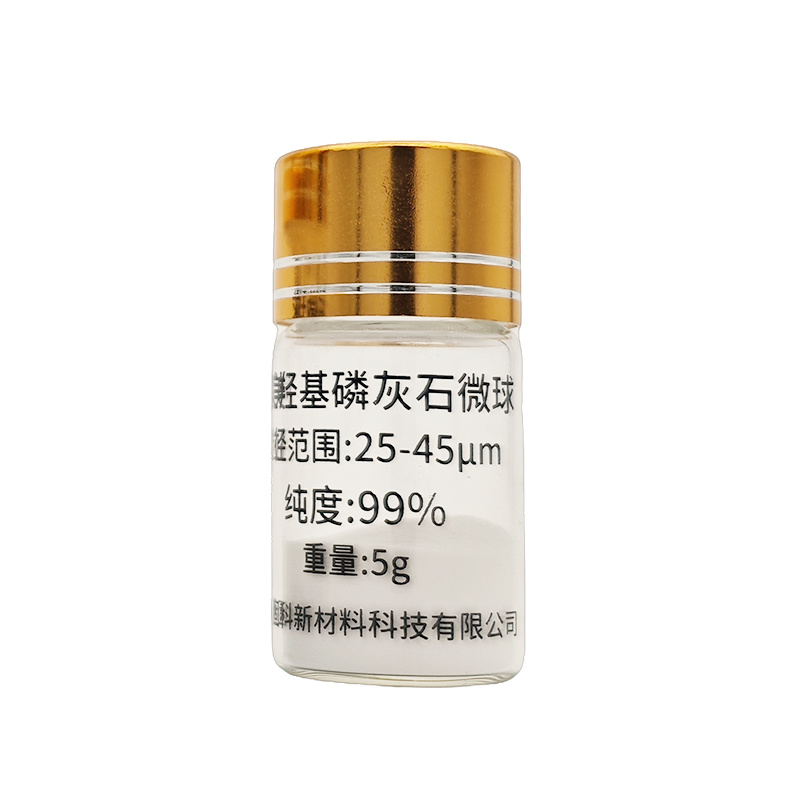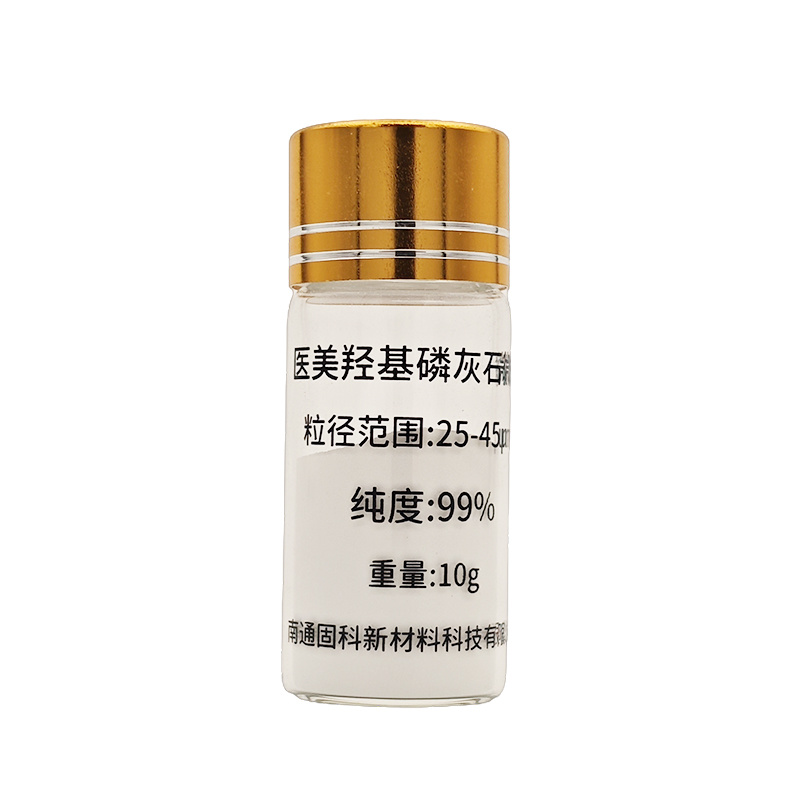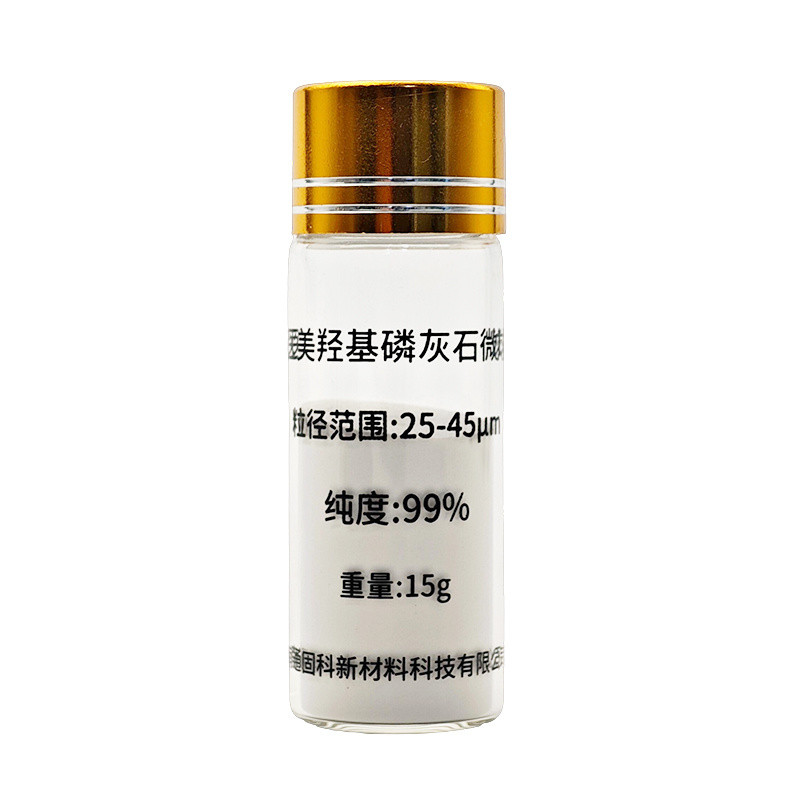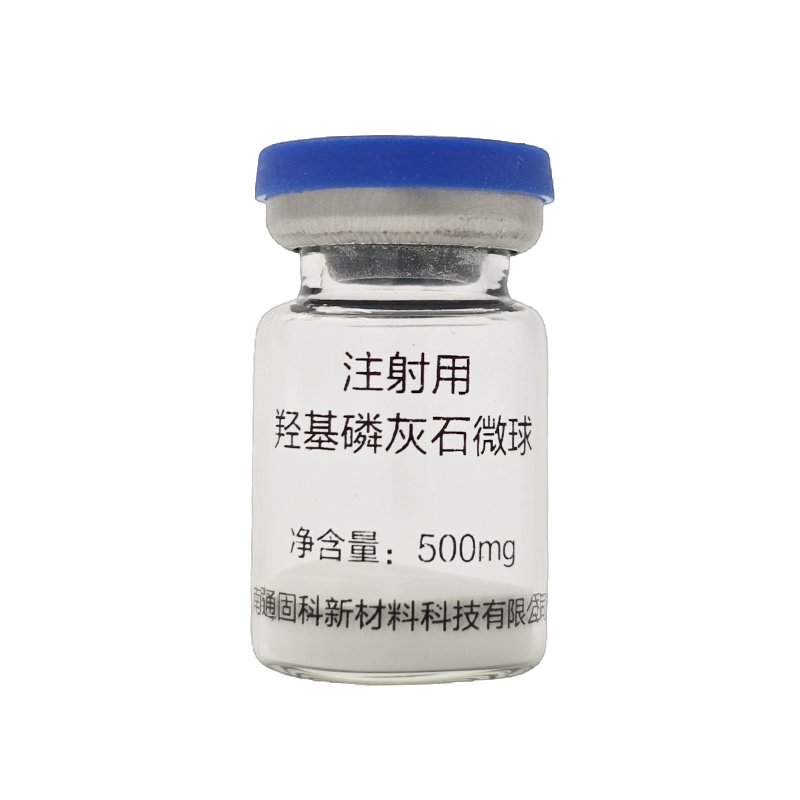
Hydroxyapatite microspheres for injection
Keywords: PLLA丨PCL丨CaHA丨HA
PRODUCT DESCRIPTION
Calcium hydroxylapatite (CaHA) (taking Radiesse as an example) mainly consists of hydroxyapatite calcium microspheres with a diameter of 25 - 45 micrometers, which is a kind of bioceramic sintered at high temperature. Besides containing 30% CaHA microspheres, the remaining 70% is a gel matrix mainly composed of water (sterile water for injection), glycerin and sodium carboxymethyl cellulose (CMC). The outer layer of the micro - porcelain is covered with a viscous gel substance. After entering the tissue, it will form a skeleton and stimulate the proliferation of collagen adhering to the skeleton. It has good biocompatibility, is not easy to cause allergies, has high safety, a short recovery period after treatment, small wounds and does not require special moisturizing.
The functions of CaHA microspheres are three - fold: (1) filling; (2) stimulating the production of collagen and elastin; (3) as well as the skin - tightening effect caused by the action of fibroblasts.
With the continuous development of the application of hydroxyapatite bioceramics, hydroxyapatite bioceramic microspheres have been applied in injection - based medical aesthetics. The gel containing hydroxyapatite microspheres brings about tissue plumpness and aesthetic improvement. This tissue augmentation can stimulate collagen regeneration, including the regeneration of type I collagen, elastin and blood vessels. Hydroxyapatite microspheres play an important role in this process. After hydroxyapatite microspheres come into direct contact with fibroblasts, the surrounding tissue forces (traction force, elastic force, etc.) are transmitted to the cells through the microspheres, stimulating the collagen regeneration of fibroblasts. Due to the degradable characteristics of hydroxyapatite, compared with hyaluronic acid, this greatly extends the plastic time of the implanted area. This clear mechanism has been recognized by the US FDA.
At present, the main product distribution at home and abroad is as follows:
(1) PLLA, PCL, CaHA and HA are all different types of filling materials used in the field of plastic and cosmetic surgery. The differences among them are as follows:
PLLA: Poly - L - lactic acid (such as Baby Face Needle) is a biodegradable polymer. It can stimulate the growth of collagen, thus achieving the effects of filling wrinkles and lifting the skin. PLLA is suitable for long - term plastic and cosmetic surgery. The effect is long - lasting but slow, and it may take several weeks or months to see the effect.
PCL: Polycaprolactone (such as Girl's Needle) is also a biodegradable polymer. Similar to PLLA, PCL can stimulate the growth of collagen, but its degradation speed is faster than that of PLLA, and the effect is also relatively short - lived.
CaHA: Hydroxyapatite (such as Radiesse) is an inorganic mineral substance, which can be used for filling facial defects and improving facial contours. Its effect is faster than that of PLLA and PCL. Usually, the effect can be seen within a few days after injection, but the duration is longer.
HA: Hyaluronic acid is a natural polysaccharide and also a commonly used filling material. HA can increase the water content of the skin, fill wrinkles and enhance facial contours. Compared with other filling materials, the effect of HA is faster, usually visible within a few days after injection, but the duration is shorter.
(2) Radiesse® and Radiesse® (+). The products consist of 70% semi - solid gel and 30% hydroxyapatite calcium microspheres. After filling, through absorption and metabolism by the human body, they promote the formation of collagen and elastin, and then the newly formed collagen fibers and collagen matrix can jointly anchor the microspheres in situ, preventing their migration and greatly reducing the risk of displacement of hydroxyapatite calcium.
In the field of medical aesthetics, currently, the filling materials on the market are mainly divided into two categories: synthetic materials such as silicone, PMMA, polyacrylamide hydrogel, polylactic acid, etc.; biological materials such as collagen, hyaluronic acid, autologous fat, etc. Radiesse micro - porcelain, which passed the US FDA certification in 2006, is considered an ideal semi - solid non - surgical facial filling material, with advantages such as good biocompatibility, formation of new natural tissue at the injection site, and longer effect maintenance time compared with other fillers. In terms of safety, it can even be comparable to short - term hyaluronic acid products. Radiesse micro - porcelain consists of 70% semi - solid gel and 30% hydroxyapatite calcium microspheres. The latter is an inherent component in the human body, while the former is formed by suspending 25 - 45 μm hydroxyapatite calcium microspheres in a gel carrier mainly composed of water and glycerin, and the gel structure is adjusted by adding a small amount of sodium carboxymethyl cellulose. According to the "Summary of Classification Results of the Second Batch of Medical Device Products in 2020" announced on September 30, 2020, for periosteal filling micro - plastic products used for facial aesthetics, "Hydroxyapatite Bioceramics for Mandibular Periosteal Filling Containing Hydroxyapatite Calcium Microspheres, Sodium Hyaluronate and Water" should be managed as Class III devices, with the classification code of 13 - 09. The hydroxyapatite calcium microspheres in this product are suspended in a gel - like carrier composed of sodium hyaluronate and water, which can be fixed at the injection site for a period of time to provide support and then be absorbed and metabolized by the human body.
The number of hydroxyapatite products used in the field of medical aesthetics is very limited, and there are few products available in China. The range of use is limited, but the annual growth rate of usage exceeds 35%, indicating that the product strength is sufficient!
application area
Next generation regenerative medicine materials
Biomedicine

Biomedicine
Beauty Clinic

Beauty Clinic
Cellular anti-aging

Cellular anti-aging
Cell storage

Cell storage
application area
Next generation regenerative medicine materials
Biomedicine

Biomedicine
Beauty Clinic

Beauty Clinic
Cellular anti-aging

Cellular anti-aging
Cell storage

Cell storage
MESSAGE










